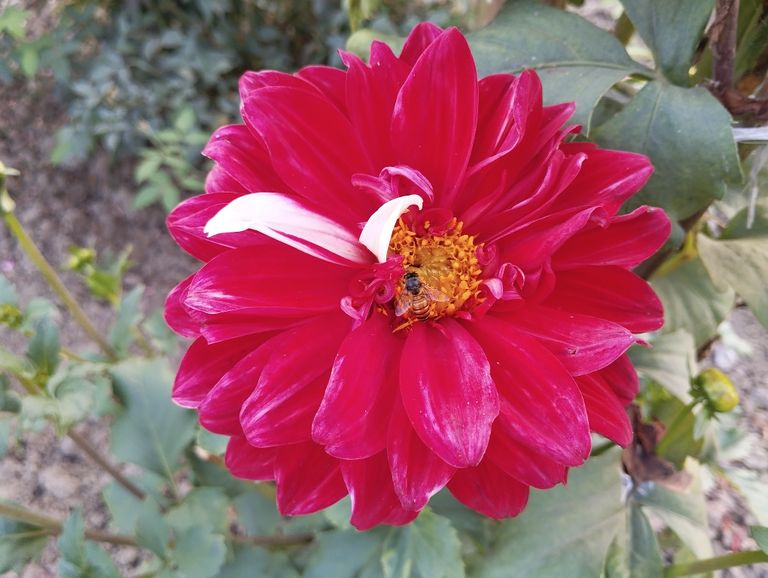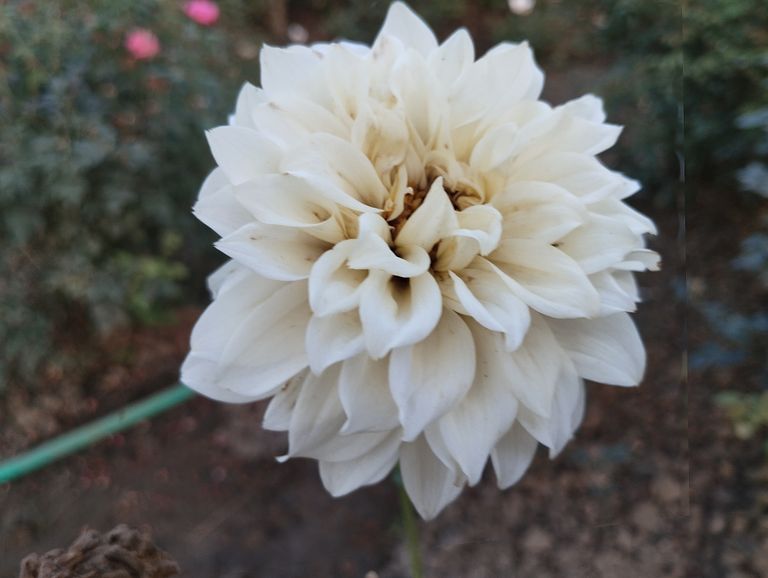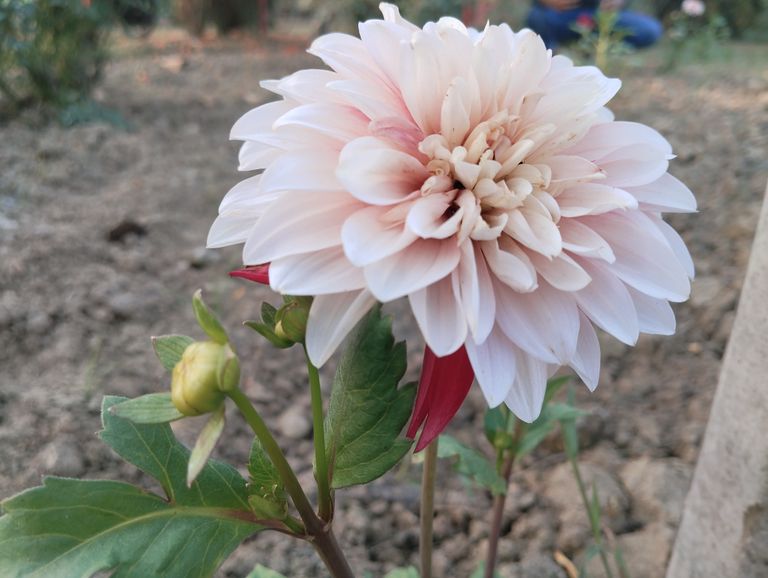
Dahlia Flower Photography Capturing Nature’s Elegance.
Dahlias are among the most stunning and photogenic flowers, known for their intricate petals and vibrant colors. Whether you're a professional photographer or an amateur enthusiast, capturing the beauty of dahlias requires the right techniques, equipment, and creative approach. In this blog, we will explore the art of Dahlia Flower Photography, covering essential tips, camera settings, composition techniques, and post-processing methods to help you take breathtaking shots.
Why Photograph Dahlias?
Dahlias are unique because of their vast range of colors, sizes, and patterns. Some key reasons to photograph dahlias include:
Intricate Petal Arrangements – Their symmetry and layers add depth and texture to photos.
Vibrant Colors – Dahlias come in shades of red, yellow, pink, purple, and white, making them a great subject for colorful photography.
Seasonal Beauty – Blooming from mid-summer to late autumn, they offer stunning seasonal compositions.
Symbolic Significance – In many cultures, dahlias symbolize elegance, strength, and creativity.
Best Time for Dahlia Photography
The best time to photograph dahlias is:
Golden Hour (early morning or late afternoon) – Soft light enhances their colors and texture.
Overcast Days – Diffused light prevents harsh shadows and brings out details.
After Rain – Droplets on petals add a refreshing and dramatic effect.
Avoid harsh midday sunlight, as it can create strong shadows and wash out colors.
Equipment for Dahlia Photography
- Camera Choice
A DSLR or mirrorless camera is ideal for detailed flower photography, but a smartphone with a good camera can also work well.
- Lenses
Macro Lens (90mm-105mm) – Perfect for close-up shots, capturing petal details and textures.
50mm or 85mm Prime Lens – Great for shallow depth-of-field and beautiful bokeh effects.
Telephoto Lens (70-200mm) – Useful for isolating dahlias from a distance while maintaining sharpness.
- Tripod
A sturdy tripod is essential for stability, especially in macro photography, where even the slightest movement can cause blur.
- Lighting Equipment
Reflectors – To bounce natural light and fill in shadows.
Softbox or Diffuser – Helps control harsh sunlight for softer lighting.
Camera Settings for Dahlia Photography
- Aperture (f-stop)
f/2.8 – f/5.6 for a blurred background (bokeh effect).
f/8 – f/11 for a balanced depth of field with sharp petals.
- Shutter Speed
1/250s or faster to avoid motion blur, especially outdoors with wind.
1/100s or lower when using a tripod for static shots.
- ISO Settings
ISO 100 – 400 for bright conditions.
ISO 800+ for low-light environments (use noise reduction in post-processing).
- Focus Mode
Use manual focus for precise control, especially in macro shots. Autofocus with single-point selection is also useful for keeping specific petal areas sharp.
Composition Techniques for Stunning Dahlia Photos
- Rule of Thirds
Place the dahlia off-center to create a balanced and visually appealing composition.
- Leading Lines
Use stems, leaves, or surrounding flowers to guide the viewer’s eye toward the main subject.
- Frame Within a Frame
Shoot through leaves or other flowers to add depth and perspective.
- Background Control
Use a blurred background (bokeh) to isolate the flower.
Choose complementary colors to make the dahlia stand out.
- Close-Up & Macro Shots
Capture fine details such as petal veins, pollen, or water droplets for an artistic effect.
- Experiment with Angles
Top-down angle for symmetry.
Side angle for depth and texture.
Low angle to create a majestic, towering effect.
Post-Processing for Perfect Dahlia Photos
- Adjust Brightness & Contrast
Enhance colors and details without making the image look unnatural.
- Increase Sharpness & Clarity
Sharpen petals and fine details while keeping backgrounds soft.
- Saturation & Color Correction
Ensure colors remain vibrant but not oversaturated. Adjust white balance for natural tones.
- Remove Distractions
Use tools like Photoshop’s Clone Stamp or Healing Brush to remove unwanted elements.
- Crop for Better Composition
Refine framing and eliminate unnecessary space to improve focus.
Creative Ideas for Dahlia Photography
- Black & White Dahlia Photography
Highlight textures and contrasts by converting your images to black and white.
- Water Droplet Effect
Spray water on petals for a fresh and dewy appearance.
- Backlit Dahlias
Shoot against sunlight to create a glowing effect around the petals.
- Multiple Exposure
Blend different shots to create a dreamy, artistic composition.
- Time-Lapse Photography
Capture the blooming process over hours or days for a stunning visual story.
Conclusion
Dahlia photography is an exciting and rewarding experience, allowing you to capture the elegance and vibrancy of nature. With the right equipment, settings, and techniques, you can create stunning images that showcase the beauty of these flowers. Whether you’re photographing them in a garden, a studio, or in the wild, remember to experiment with lighting, angles, and composition to bring out the best in your shots.
So grab your camera, head to a dahlia garden, and start capturing nature’s floral masterpiece!
Would you like me to add more sections, such as recommended gardens for dahlia photography or editing software tutorials.
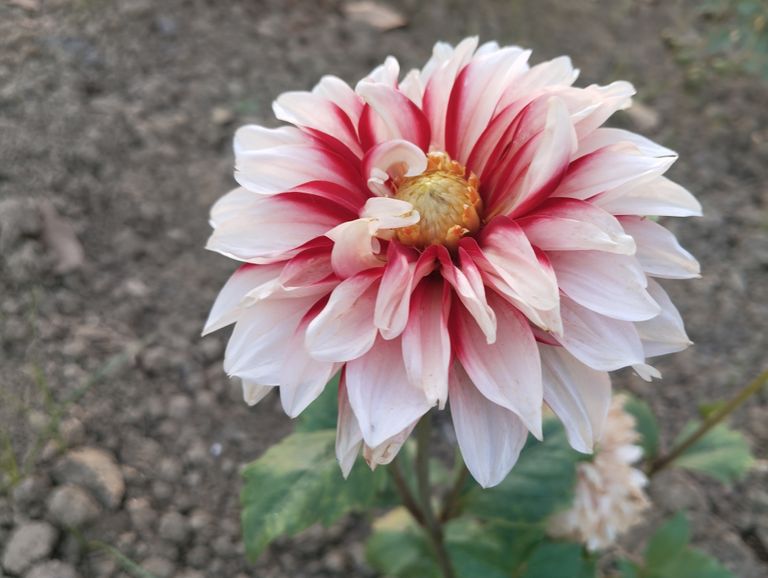
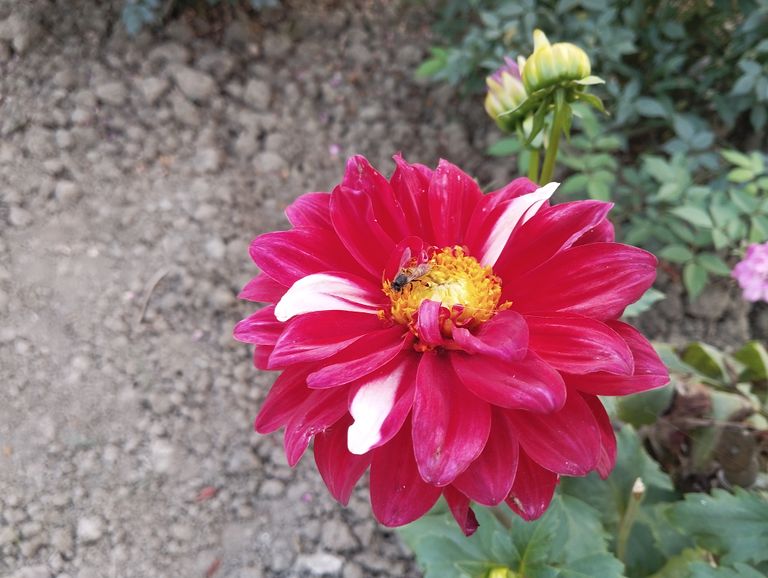
The Beauty of Dahlia Flowers
Dahlia flowers are among the most stunning and captivating blooms in the world. With their vibrant colors, intricate petal arrangements, and remarkable variety, they bring a touch of elegance to any garden or floral display. These flowers have fascinated gardeners, artists, and flower enthusiasts for centuries. In this blog, we will explore the beauty of dahlias, their significance, varieties, and tips on growing them to enhance your garden’s charm.
The Unique Charm of Dahlias
Dahlias are known for their extraordinary beauty and symmetrical perfection. They bloom in an array of colors, from bright reds, pinks, and yellows to soft pastels and even striking bi-color combinations. Some dahlia varieties feature delicate, single-layered petals, while others boast intricate, layered blooms that can resemble peonies, chrysanthemums, or even water lilies.
One of the most remarkable features of dahlias is their versatility. They can be small and delicate or large and dramatic, making them perfect for bouquets, centerpieces, and garden borders. Their vibrant hues and diverse shapes make them a favorite among florists and photographers.
Historical and Cultural Significance
Dahlias originated in Mexico and Central America, where they were cultivated by the Aztecs for their beauty and medicinal properties. The flower was later introduced to Europe in the late 18th century, where it quickly gained popularity among gardeners and botanists.
In Victorian times, dahlias symbolized elegance, dignity, and commitment. They were often used in floral arrangements to convey deep emotions. Today, they are associated with inner strength, creativity, and change, making them a meaningful gift for loved ones.
Varieties of Dahlias
Dahlias come in numerous varieties, each with its own unique appeal. Some of the most popular types include:
- Decorative Dahlias
These are among the most common types and are known for their large, full blooms. Their broad, flat petals create a striking, symmetrical appearance, making them a favorite for bouquets and garden displays.
- Cactus Dahlias
Characterized by their spiky, narrow petals, cactus dahlias have a wild and exotic look. Their dramatic shape adds texture and movement to any floral arrangement.
- Pompon and Ball Dahlias
These varieties have tightly packed, rounded blooms that resemble a perfect sphere. Their compact size and neat petal arrangement make them ideal for adding a touch of charm to flower beds and arrangements.
- Anemone Dahlias
With a unique structure featuring a central cluster of tubular petals surrounded by a ring of flatter petals, anemone dahlias stand out for their unusual yet graceful appearance.
- Waterlily Dahlias
These dahlias resemble water lilies, with broad, soft petals that form a delicate, floating-like shape. They are elegant and perfect for romantic garden settings.
- Collarette Dahlias
Collarette dahlias have an extra layer of smaller petals around the center, giving them a distinctive, frilled look. They add an element of playfulness to any floral display.
How to Grow and Care for Dahlias
Growing dahlias is a rewarding experience, as they bloom beautifully with the right care. Here are some essential tips for cultivating these magnificent flowers:
- Choosing the Right Location
Dahlias thrive in full sunlight, so it is important to plant them in a spot that receives at least six to eight hours of direct sunlight daily. They prefer well-drained, fertile soil rich in organic matter.
- Planting Dahlias
Dahlia tubers should be planted in the spring after the last frost. Dig a hole about 4-6 inches deep and place the tuber with the "eye" facing upward. Cover it with soil and water gently.
- Watering and Feeding
Dahlias require regular watering, especially during dry spells. However, overwatering can cause tuber rot, so it is best to keep the soil moist but not soggy. Fertilizing with a balanced, low-nitrogen fertilizer promotes healthy blooms.
- Supporting Tall Varieties
Some dahlia varieties grow quite tall and need support to prevent them from bending or breaking. Using stakes or plant supports will help keep them upright.
- Deadheading for Continuous Blooms
Regularly removing spent flowers encourages continuous blooming throughout the season. This also helps maintain the plant’s overall health and appearance.
- Overwintering Dahlias
In colder climates, dahlia tubers should be dug up and stored indoors during the winter to protect them from frost. Store them in a cool, dry place and replant them in the spring.
The Role of Dahlias in Floral Arrangements
Dahlias are a top choice for florists due to their long vase life and stunning appearance. Their wide range of colors and shapes allows them to be used in various floral designs, from elegant wedding bouquets to bold and vibrant centerpieces.
When paired with other flowers such as roses, lilies, and chrysanthemums, dahlias create a breathtaking floral arrangement. They also blend beautifully with greenery and filler flowers to add depth and texture.
Dahlias as a Symbol of Beauty and Elegance
Dahlias have long been associated with grace, elegance, and resilience. Their ability to thrive in diverse conditions and produce stunning blooms makes them a symbol of strength and beauty. Whether grown in a garden, displayed in a bouquet, or admired in nature, dahlias never fail to impress.
Their vibrant colors and intricate petal formations inspire artists, poets, and photographers. They are often.

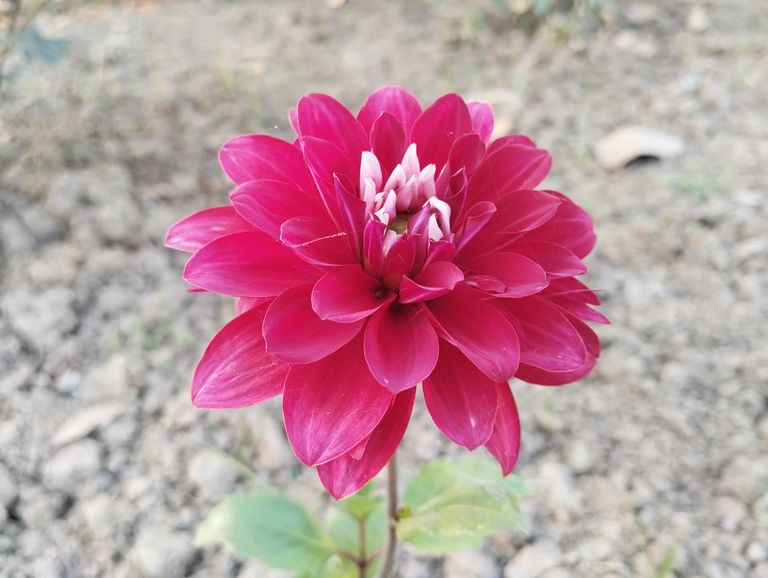
The Beauty of Dahlia Flowers
Dahlia flowers are among the most stunning and captivating blooms in the world. With their vibrant colors, intricate petal arrangements, and remarkable variety, they bring a touch of elegance to any garden or floral display. These flowers have fascinated gardeners, artists, and flower enthusiasts for centuries. In this blog, we will explore the beauty of dahlias, their significance, varieties, and tips on growing them to enhance your garden’s charm.
The Unique Charm of Dahlias
Dahlias are known for their extraordinary beauty and symmetrical perfection. They bloom in an array of colors, from bright reds, pinks, and yellows to soft pastels and even striking bi-color combinations. Some dahlia varieties feature delicate, single-layered petals, while others boast intricate, layered blooms that can resemble peonies, chrysanthemums, or even water lilies.
One of the most remarkable features of dahlias is their versatility. They can be small and delicate or large and dramatic, making them perfect for bouquets, centerpieces, and garden borders. Their vibrant hues and diverse shapes make them a favorite among florists and photographers.
Historical and Cultural Significance
Dahlias originated in Mexico and Central America, where they were cultivated by the Aztecs for their beauty and medicinal properties. The flower was later introduced to Europe in the late 18th century, where it quickly gained popularity among gardeners and botanists.
In Victorian times, dahlias symbolized elegance, dignity, and commitment. They were often used in floral arrangements to convey deep emotions. Today, they are associated with inner strength, creativity, and change, making them a meaningful gift for loved ones.
Varieties of Dahlias
Dahlias come in numerous varieties, each with its own unique appeal. Some of the most popular types include:
- Decorative Dahlias
These are among the most common types and are known for their large, full blooms. Their broad, flat petals create a striking, symmetrical appearance, making them a favorite for bouquets and garden displays.
- Cactus Dahlias
Characterized by their spiky, narrow petals, cactus dahlias have a wild and exotic look. Their dramatic shape adds texture and movement to any floral arrangement.
- Pompon and Ball Dahlias
These varieties have tightly packed, rounded blooms that resemble a perfect sphere. Their compact size and neat petal arrangement make them ideal for adding a touch of charm to flower beds and arrangements.
- Anemone Dahlias
With a unique structure featuring a central cluster of tubular petals surrounded by a ring of flatter petals, anemone dahlias stand out for their unusual yet graceful appearance.
- Waterlily Dahlias
These dahlias resemble water lilies, with broad, soft petals that form a delicate, floating-like shape. They are elegant and perfect for romantic garden settings.
- Collarette Dahlias
Collarette dahlias have an extra layer of smaller petals around the center, giving them a distinctive, frilled look. They add an element of playfulness to any floral display.
How to Grow and Care for Dahlias
Growing dahlias is a rewarding experience, as they bloom beautifully with the right care. Here are some essential tips for cultivating these magnificent flowers:
- Choosing the Right Location
Dahlias thrive in full sunlight, so it is important to plant them in a spot that receives at least six to eight hours of direct sunlight daily. They prefer well-drained, fertile soil rich in organic matter.
- Planting Dahlias
Dahlia tubers should be planted in the spring after the last frost. Dig a hole about 4-6 inches deep and place the tuber with the "eye" facing upward. Cover it with soil and water gently.
- Watering and Feeding
Dahlias require regular watering, especially during dry spells. However, overwatering can cause tuber rot, so it is best to keep the soil moist but not soggy. Fertilizing with a balanced, low-nitrogen fertilizer promotes healthy blooms.
- Supporting Tall Varieties
Some dahlia varieties grow quite tall and need support to prevent them from bending or breaking. Using stakes or plant supports will help keep them upright.
- Deadheading for Continuous Blooms
Regularly removing spent flowers encourages continuous blooming throughout the season. This also helps maintain the plant’s overall health and appearance.
- Overwintering Dahlias
In colder climates, dahlia tubers should be dug up and stored indoors during the winter to protect them from frost. Store them in a cool, dry place and replant them in the spring.
The Role of Dahlias in Floral Arrangements
Dahlias are a top choice for florists due to their long vase life and stunning appearance. Their wide range of colors and shapes allows them to be used in various floral designs, from elegant wedding bouquets to bold and vibrant centerpieces.
When paired with other flowers such as roses, lilies, and chrysanthemums, dahlias create a breathtaking floral arrangement. They also blend beautifully with greenery and filler flowers to add depth and texture.
Dahlias as a Symbol of Beauty and Elegance
Dahlias have long been associated with grace, elegance, and resilience. Their ability to thrive in diverse conditions and produce stunning blooms makes them a symbol of strength and beauty. Whether grown in a garden, displayed in a bouquet, or admired in nature, dahlias never fail to impress.
Their vibrant colors and intricate petal formations inspire artists, poets, and photographers. They are often.
